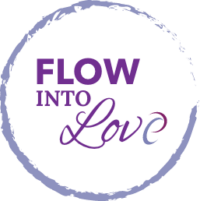WTF? WHAT THE FLOW
“Flow is being completely involved in an activity for its own sake. The ego falls away. Time flies. Every action, movement, and thought follows inevitably from the previous one, like playing jazz. Your whole being is involved, and you’re using your skills to the utmost.”
– Mihaly Csikszentmihalyi
Psychologists refer to flow as a mental state of being completely absorbed in something. Flow is considered by some peak performers as the “deep now, in rhythm, in a groove, runner’s high or being in the zone.” Flow is one of life’s highly enjoyable states of being. It is an optimal state of consciousness where you feel your best and perform your best. You are entirely in the present moment, being creative, productive and happy. You also have better emotional regulation, greater enjoyment and fulfillment. Flow consists of completing activities that lead you to your goals and wellbeing. You accomplish more in a shorter amount of time.
| There are four characteristics of a flow state known as STER, that include: |
|---|
|
|
|
|
The Cutting Edge: The Science Behind Why Flow Works
 Research has found that when someone is in a state of flow, a person’s heart rate increases, they experience slow and deeper breathing, there is a higher variability in their heart rate, they are smiling, body temperature decreases, and there is an increase in galvanic skin response. Everything slows down in the brain called transient hypofrontality. There is a shift in the brain’s neuroelectricity where the brain waves sit on the border of daydreaming and dreaming (alpha/theta).
Research has found that when someone is in a state of flow, a person’s heart rate increases, they experience slow and deeper breathing, there is a higher variability in their heart rate, they are smiling, body temperature decreases, and there is an increase in galvanic skin response. Everything slows down in the brain called transient hypofrontality. There is a shift in the brain’s neuroelectricity where the brain waves sit on the border of daydreaming and dreaming (alpha/theta).
All of the body stress hormones are flushed out and are replaced by feel-good hormones. The brain undergoes neurochemical changes during flow state. It combines five of the most potent neurochemicals the brain can produce, and flow is the only time the brain produces all five at once. These neurochemicals include: Norepinephrine, Dopamine, Endorphins, Anandamide and Serotonin.
- Norepinephrine speeds up the heart rate, muscle tension and respiration and it also releases glucose into the blood stream, so we have more energy. It also increases arousal, attention, efficiency of neural network and emotional regulation. This neurochemical keeps us focused on the task at hand. There is a heightened state of awareness without much effort to do it.
- Dopamine is largely known as the happiness, feel good or reward chemical and is released when we experience something that brings us pleasure. It also increases attention and our ability to process information and pattern recognition. Our heart rate and blood pressures increase with dopamine.
- Endorphins are naturally produced by your body. It is a pain killer and pleasure producer as they reduce the effects of how intense pain, tension, stress or discomfort may feel during an experience.
- Anandamide comes from the Sanskrit word “Ananda” which means bliss. This chemical elevates mood, reduces pain, dilates blood vessels and bronchial tubes, and improves lateral thinking. This neurochemical inhibits fear making it easier for us to try new things and take risks. It also makes us feel good (excited even), reduces pain, and helps us to be more creative.
- Serotonin gives us a feeling of peace and tranquility and shows up at the tail end of a flow state. This chemical regulates our moods. More research is being conducted for this one.
A flow state can be achieved through daily practice to get your brain into the habit of producing all of the neurochemicals mentioned above and it will get easier with time as long as you are consistent with it. You can experience a 400 to 500% change in your life when you develop a flow lifestyle. This change increases your wellbeing. We can trigger flow within ourselves and when we are with other people. Therefore, being in a state of flow can deepen your relationships including the one with yourself.
Flow into Love

When you’re giving your fullest attention to an activity or task that you are incredibly passionate about, singularly focused on, and totally immersed in, you may find yourself in a flow state of mind. Chatter fades away and you are in a non-distracted zone. So, imagine yourself in this state while connected to another person, especially someone you care deeply for. This is the sweet spot where everything else falls away (inhibition, fatigue, stress, pain, etc.) leaving you in a place where you feel ecstatic, motivated, fulfilled, and loved. In effect, by utilizing the principles of flow, you can become an alchemist who can transform your relationships into ones which are made of the stuff that you’ve always dreamed of. Feel and share more love by learning how to FLOW INTO LOVE through the Relationship Flow Coaching program.

